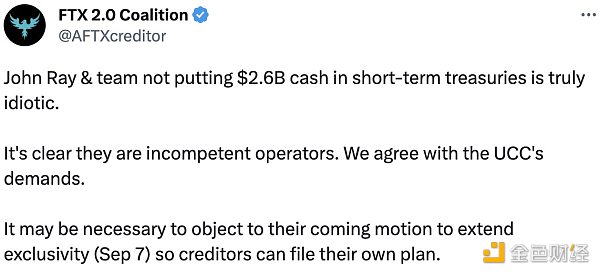Depth | How does the blockchain cross the Valley of Death?
In 2019, the market began to bottom out, and the volume and price of the encrypted secondary market were slowly recovering.
Is the encryption market ushered in spring? Can blockchain technology be embraced by mainstream society? Before exploring this issue, it is necessary to understand the value of the blockchain network and its life cycle.
This article was written by senior investor Howard Yuan and published exclusively by Encrypted Valley Editor.
- Morgan, HSBC, Citigroup battle blockchain, who can dominate cross-border payment?
- People familiar with the matter: Fidelity, one of the world's largest asset management companies, will provide bitcoin trading services to institutional clients within a few weeks.
- "Bullying the tyrants" a ring, the global capital market ushered in a storm
Network value and life cycle of blockchain
What is the value of the blockchain network? Traditional network values are based on user interactions such as phone calls and social networks. Here is a formula for measuring the value of the network, Metcalfe's Law: The value of the network is proportional to the square of the network node (user).
This relationship is based on the so-called "network effect", that is, the more users the network participates, the greater the network value.
In a network with n users, the number of links per user and other users is n(n-1)/2, and when n is large, n(n-1)/2 is approximately equal to n2, ie, The value of the network is the square of its number of users.
In 2013, Metcalfe made some corrections to this law, n should be logistic growth. This applies to valuations of centralized Internet companies such as Tencent or Facebook, as well as the value of decentralized networks.
On March 20 this year, digital currency analyst Timothy Peterson published a paper "bitcoin Spreads Like a Virus" on SSRN, which also analyzed this. The market value of Facebook or BTC depends on the growth of its number of users. The more people participate, the more resources are invested in the network, the more robust the entire network, and the greater the value of the network.
However, not every decentralized network can achieve Facebook's achievements. Blockchain projects, like other new technologies, typically experience the following lifecycles from a user growth perspective:
- Innovation;
- Early Adopter;
- Early Majority;
- Late Majority;
- Trailers (Leggards).
In addition, many technologies will experience a hype cycle before they fully realize their potential – from the initial enthusiasm of early adopters to mass media hype, after reaching the peak of expectations, and then ending with hype, consumer interest will eventually disappear.
For the blockchain that has experienced the disillusionment, after a slow enlightenment ramp, the next step is to reach the plateau of productivity.
In view of the current development of most blockchain networks, we are still in the early stage of innovation in a technology development cycle, which is reflected in many indicators, such as the number of users in the entire blockchain network and the encryption market. The market value is at a relatively low level. Although there are at least 2,000 public projects in the market as a whole, and some old projects have more consensus users, most of them are still relatively early.
From the past, BTC, as the pioneer of the blockchain, has undoubtedly attracted the first batch of technological innovation geeks. Ethereum has brought the blockchain into the 2.0 era through smart contracts, which has spawned many public chains and exchanges, attracting a group of early adopters.
From "innovators" to "early adopters" are early markets, and from "early adopters" to "early majority" there is a "Death Valley" (The Chasm), most decentralized Blockchain projects will be smashed and eventually die out, largely because of the lack of core users or killer applications.
Blockchain projects must cross the “Valley of Death” and be adopted by the mainstream public, often requiring more real application cases to achieve.
Key applications of blockchain
The application of the blockchain has been described by many people before. Many people are deifying the blockchain: just like the "Internet +" boom of a few years ago, the blockchain can also empower all real economies and even subvert the Internet.
In my opinion, the blockchain is only part of the Internet, and the blockchain will not replace the Internet, but blockchain technology will make the Internet more credible, secure and decentralized. In addition, as with the development of Internet technology, blockchain technology is far less widely used in large-scale scenarios.
Since the early days of BTC and blockchain, some key applications have been developed mainly in the financial sector, such as:
New payments, emerging investment models and financial back-end solutions
- Payment : A transfer transaction between individuals (C2C, B2C or B2B) within the traditional financial services ecosystem, such as Bitcoin, Monero, Ripple, Stellar, etc.;
- Speculation : Alternative asset investment or trading market. Encryption technology brings an alternative investment asset class with growth potential, volatility and technical barriers, such as Coinbase, Binance, Kraken, etc.
- Crowdfunding : On the other side of speculation, companies can acquire capital through first-time token financing, securitization or exchange financing. For example: ETH, Bancor;
- Definalization Finance (DeFi) : Create decentralized or open financial services that operate in a more cost-effective manner without the need for trusted third parties; such as MakerDAO, Augur, 0x;
- Asset Tokenization : Create tradable certificates to achieve partial ownership of real assets (such as stocks, real estate, art, etc.) such as Tzero, Polymath, Swarm;
- Borrowing/Lending : Obtain an encrypted asset mortgage until the loan is repaid (or liquidated), such as Maker, Compound, Dharma;
- Micro-payment : Provides some paid-for-use items or micropayment services to reduce friction costs during the transaction. For example: BCH, NANO.
Collaborative ecosystem
After the beginning of 2017, the blockchain has added several non-financial applications. We can call it a new collaborative ecosystem created for businesses and professionals:
- Web 3.0 : Cloud services provided through a decentralized network, such as file or database storage, software-defined networking or web proxies such as IPFS and Sia;
- Data Ecosystem : Provides professional services to data scientists and AI developers, including better data provisioning, AI model training, etc., such as SingularityNET, Fetch, etc.
- Identity Management : Provides a universal, unique, and verifiable identity for people, organizations, or devices, such as CIVIC;
- Supply Chain Management : Manages the transfer and interaction of services between organizations in the supply chain, such as Vechain;
- Data Sharing : Easily share data across organizations, such as Enigma;
- Decentralized Autonomous Organization (DAO) : Set up predefined rules in code to implement a self-managed non-hierarchical organization, such as DigixDAO, Aragon;
- Collectibles : Create a collaborative game with unique collections to share and trade collectibles such as Decentraland, Crypto Kitty.
If we perform specific quadrant analysis on the maturity (solution availability) and value proposition (degree of economic value created) for the above main application scenarios, as shown in the above figure:
- Crowdfunding and speculation clearly have high potential, and the business model is quite mature;
- Offline payments have existed since the early days of BTC, but have not yet been applied on a large scale. Micropayments have the potential to stimulate new business models, but the development model has not yet been determined and is still in the theoretical stage; DeFi's business model is still in its early stages, and its value proposition is still not recognized by the public;
- In the area of collaborative ecosystems, supply chain management is often dominated by industry giants; in the data ecosystem, there is still a lack of a highly available and mature solution.
Looking for the next killer app
Make a definition of the "killer application". According to the killer application of the Internet, there should be at least tens of millions of daily users. If you measure the blockchain industry, there is basically no killer application that meets the standards.
From the perspective of user volume, the blockchain is still a very small market. Dr. Xiao Feng from the Wanxiang blockchain once pointed out that the blockchain may never have a killer application with hundreds of millions of users and millions of live days.
We did find some interesting scenarios where blockchain technology can be applied, but it is difficult to determine a killer product that can immediately drive mainstream applications, both in terms of product maturity and value bearing. Many application examples do have a clear value proposition, but they are not subversively producing at least a 10x improvement, and the blockchain needs to find an area with its unique competitive advantage.
Looking back at the current blockchain application ecosystem, we will find that the most valuable applications of blockchains are still focused on financial use cases.
Https://ethereumworldnews.com/xrp-xlm-and-bitshares-are-significantly-better-for-remittances-than-any-fiat-based-solution-block>
The Blockdata report in the above chart shows that blockchain transfers are 388 times faster than traditional financial systems, and costs are 127 times lower. In 2017, global remittances have grown to $613 billion, an increase of 7% compared to 2016. Transfer payment is a massive blue ocean market. The use of blockchain technology can greatly improve the efficiency of remittance transfer, and the commercial value brought by it is promising.
In 2019, we noticed that some Internet companies with huge traffic began to take action. For example, Facebook with 2.7 billion users will release the US dollar 1:1 stable coin Facebook Coin based on its ecological WhatsApp, Messenger, and Instagram, and will first enter the Indian market, targeting multinational remittance applications.
The blockchain may not be able to achieve the transmission efficiency of the centralized network, but the decentralized, peer-to-peer, and trusted payment network is the competitive advantage of the blockchain. Focusing on cross-border payments, stable currency, clearing, supply chain finance and other subdivisions may actually create a killer application.
All along, many investment institutions have been stuck in the blockchain protocol layer investment (or Layer 1/2 solution), betting on various types of encryption exchanges, but in fact, we need some real blockchain application cases. Because only these real application cases can help blockchain technology cross the “Death Valley” of the technology development cycle and push it to the mainstream for recognition and application. And one day, these attempts will be rewarded with great economic value.
We will continue to update Blocking; if you have any questions or suggestions, please contact us!
Was this article helpful?
93 out of 132 found this helpful
Related articles
- Gu Yanxi: Stripe, IBM and Stellar's cooperation to us
- Encrypted Currency Research Report | People still dancing, Come hell or high water
- Pepsi-Cola increased its supply chain efficiency by 28% through blockchain testing
- Market analysis: ETH has a strong breakthrough in the down channel, the Air Force may have to wait
- ConsenSys proposes Ethereum sidechain solutions to improve interoperability between public and private blockchains
- Dry goods | Current main limitations of Lightning Network (Part-2)
- Depth | DLT technology "touchstone" How does the central bank digital currency CBDC break into the butterfly?





